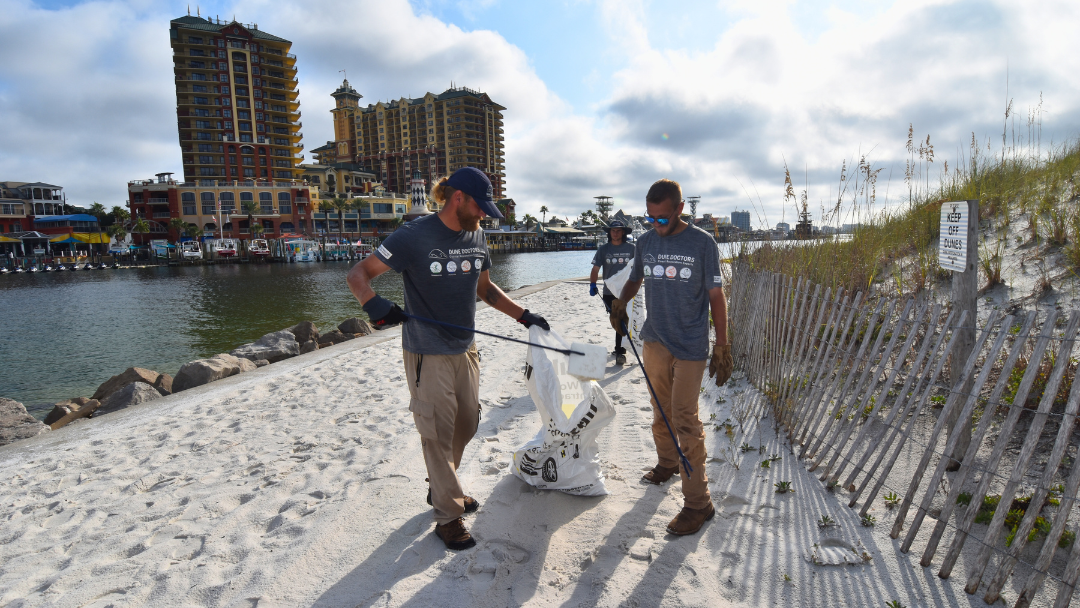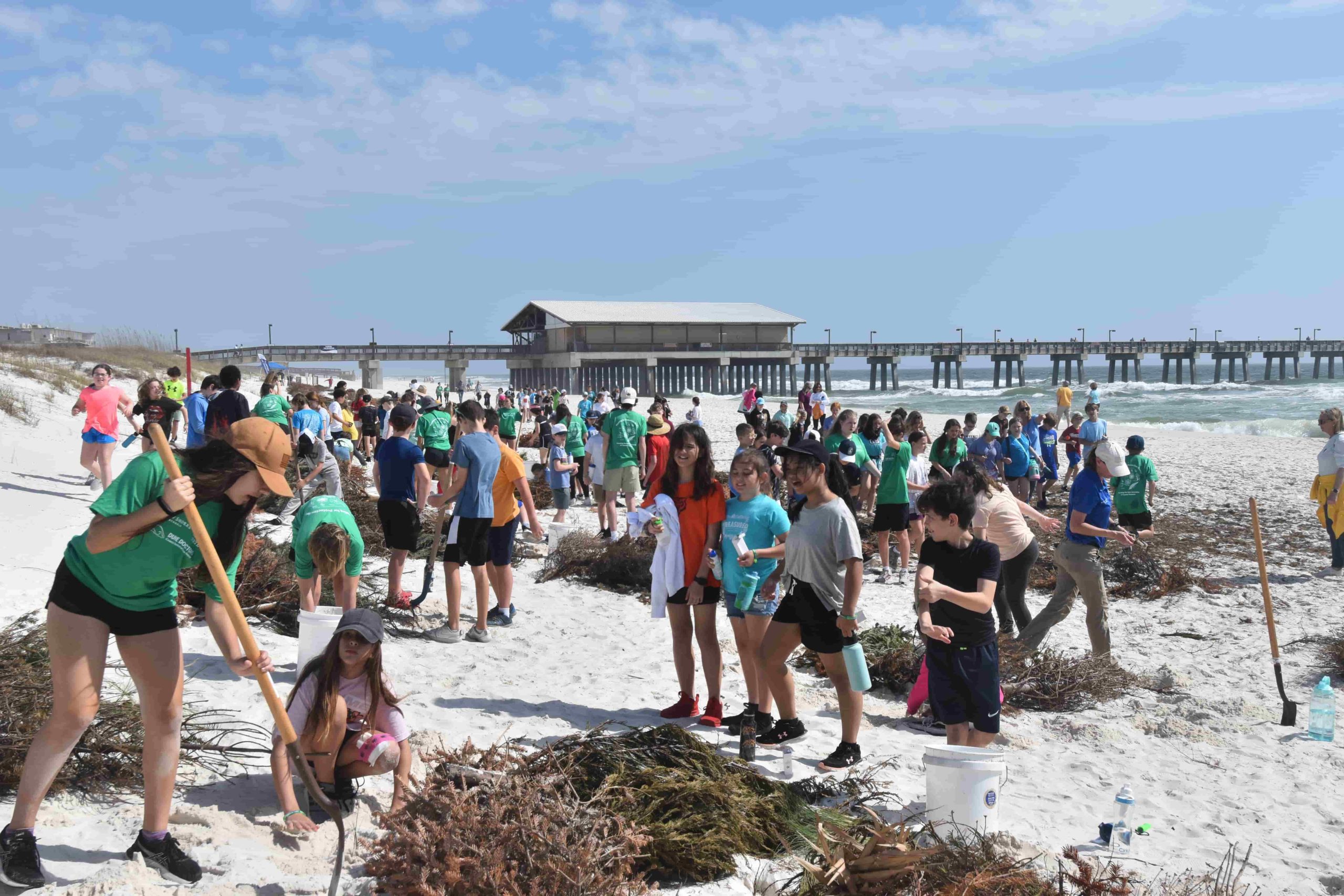Four Invasive Plants Crowding Out Native Coastal Plants
Coastal plants anchor sand dunes and protect against erosion, but these four invasive plant species are crowding out native vegetation and could disrupt your dune ecosystem.
Very few plants can survive the dynamic forces that shape the coastal environment. From powerful winds to temporary periods of drought, the dune ecosystem can home only the most resilient collection of well-adapted plants and small animals. Unfortunately, four invasive plant species have managed to grow under these conditions and compete with native plant communities for the limited food and water available. These threatening plants include beach vitex, beach naupaka, Chinese tallow, and the Australian pine. All four have caused documented damage by displacing or hybridizing with native species.
Brought in from all over the world due to quality traits deemed useful or beautiful, exotic plants, if left to grow unchecked, don’t face the same restricting environmental factors from back home and can greatly alter the plant communities they are introduced into. With many major ports of entry all along the Gulf Coast, the American South has received countless foreign plants and animals that have been either deliberately introduced or happened to hitchhike into the country hidden amongst cargo.
What are invasive Plant Species?
Every year, the Florida Exotic Pest Plant Council releases a comprehensive list of invasive plant species and divides the plants into two groups: Category 1 and Category 2. The first group is comprised of plants that have caused ecological damage through crowding out or hybridizing with native vegetation. Category 2 is a collection of plants that rapidly spread but has not yet altered local plant communities as drastically as Category 1. Once a species from Category 2 is documented to cause ecological damage they are reassigned to Category 1. For the sake of this article, we looked at Category 1 coastal plants listed in the 2019 Florida report and cross-referenced with the noxious weed list of each Gulf Coast state to see if there was any overlap. For a standard definition, any foreign plant that gets established and spreads is considered invasive, and a noxious weed is a plant that is legally restricted by a government body.
Beach Vitex: Vitex Rotundifolia
Native to the western Pacific from Korea to northern Australia, the beach vitex was intentionally introduced for horticultural purposes including dune stabilization. The University of Florida’s Center for Aquatic and Invasive Plants explains that a decade after being introduced the plant demonstrated its invasive potential by rapidly reproducing with short growth time. The beach vitex affects dune plants by smothering the vegetation and reducing sunlight levels with its dense leafy mats. With a high drought and salt tolerance, the beach vitex is a strong competitor. Unlike sea oats, the primary dune stabilizing plant along the Gulf Coast, this invasive does not have a complex root system and is, therefore, less effective at anchoring sand in place.
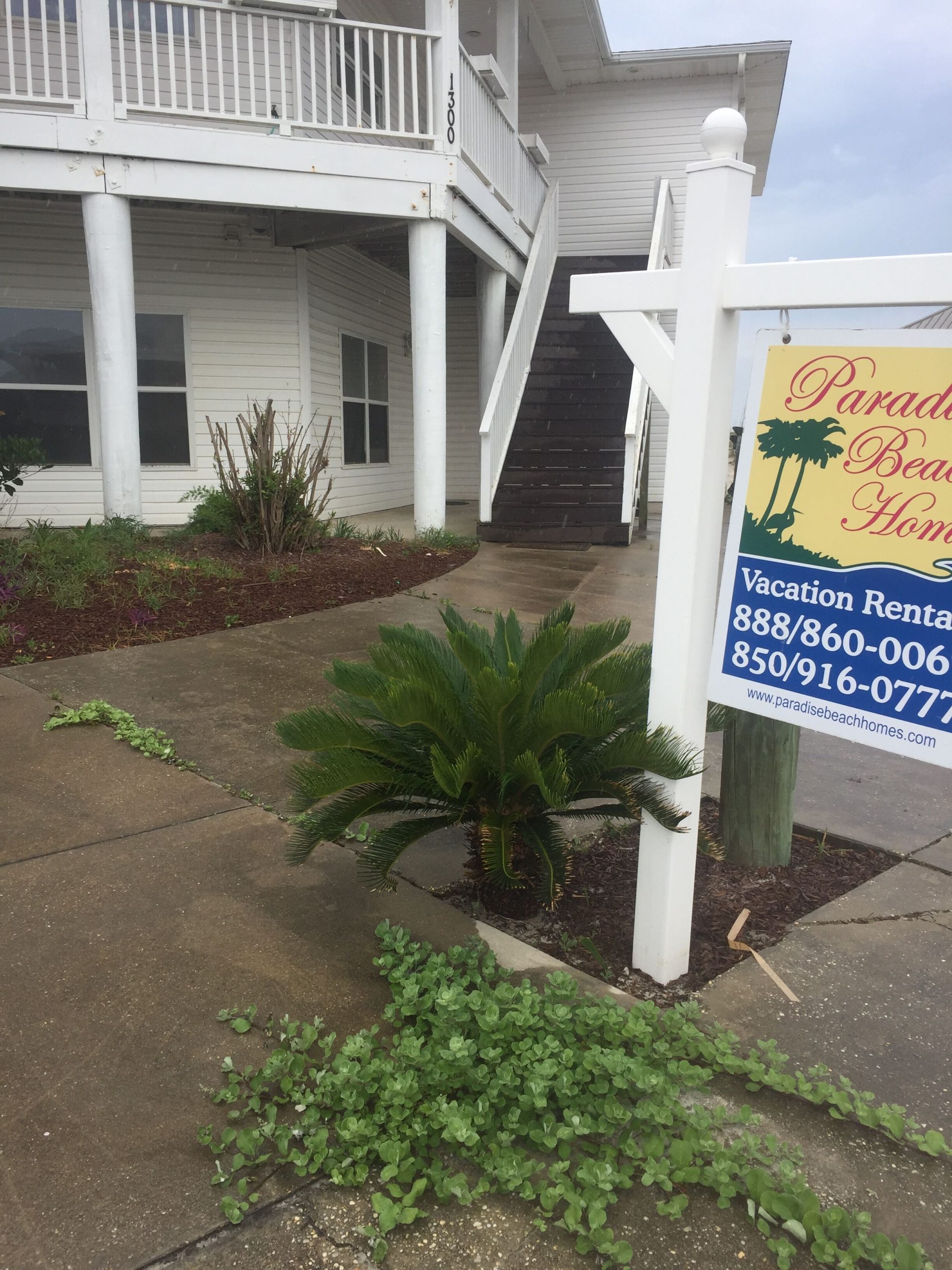
In the picture above, beach vitex is growing out of the cracks in the concrete and spreading along the walkway. In the picture below, you can see how the plant has overtaken the landward portion of the dunes.
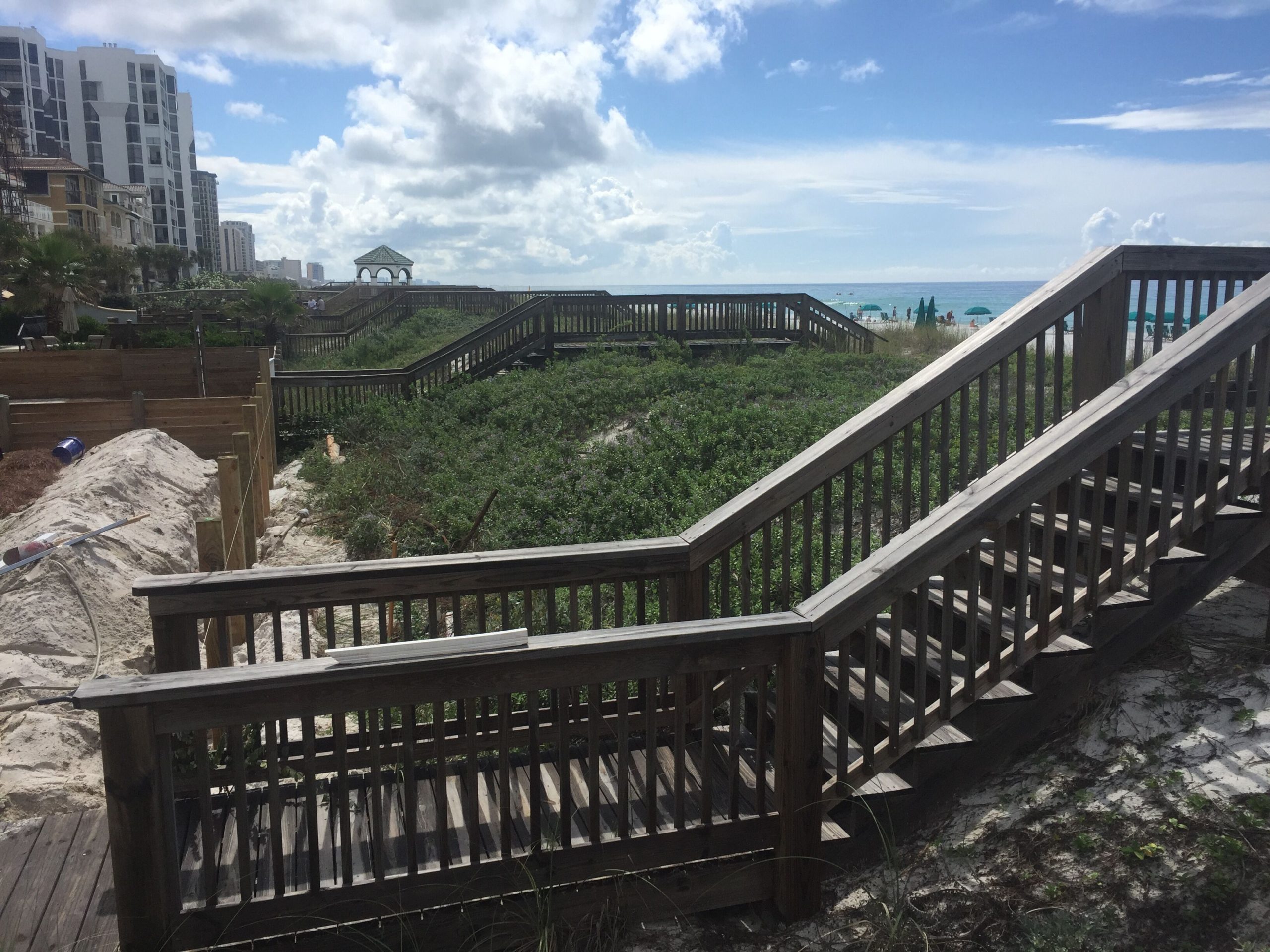
Half Flower, Beach Naupaka: Scaevola Taccada
Often depicted on postcards sent from Hawaii, the half flower or beach naupaka is a beautiful plant known for its year-round flowers. Native to the Indian and Pacific Ocean region, the beach naupaka is a large, bushy shrub that grows directly on the beach. Used to prevent coastal erosion on certain islands of the Pacific, the plant prefers well-drained pebbly or sandy soil and can handle saline spray. Unfortunately, it has invaded and displaced native vegetation of many Caribbean nations and certain Gulf Coast communities. The Florida Department of Agriculture Consumer Services classifies the beach naupaka as a noxious weed and legally prohibits its distribution.
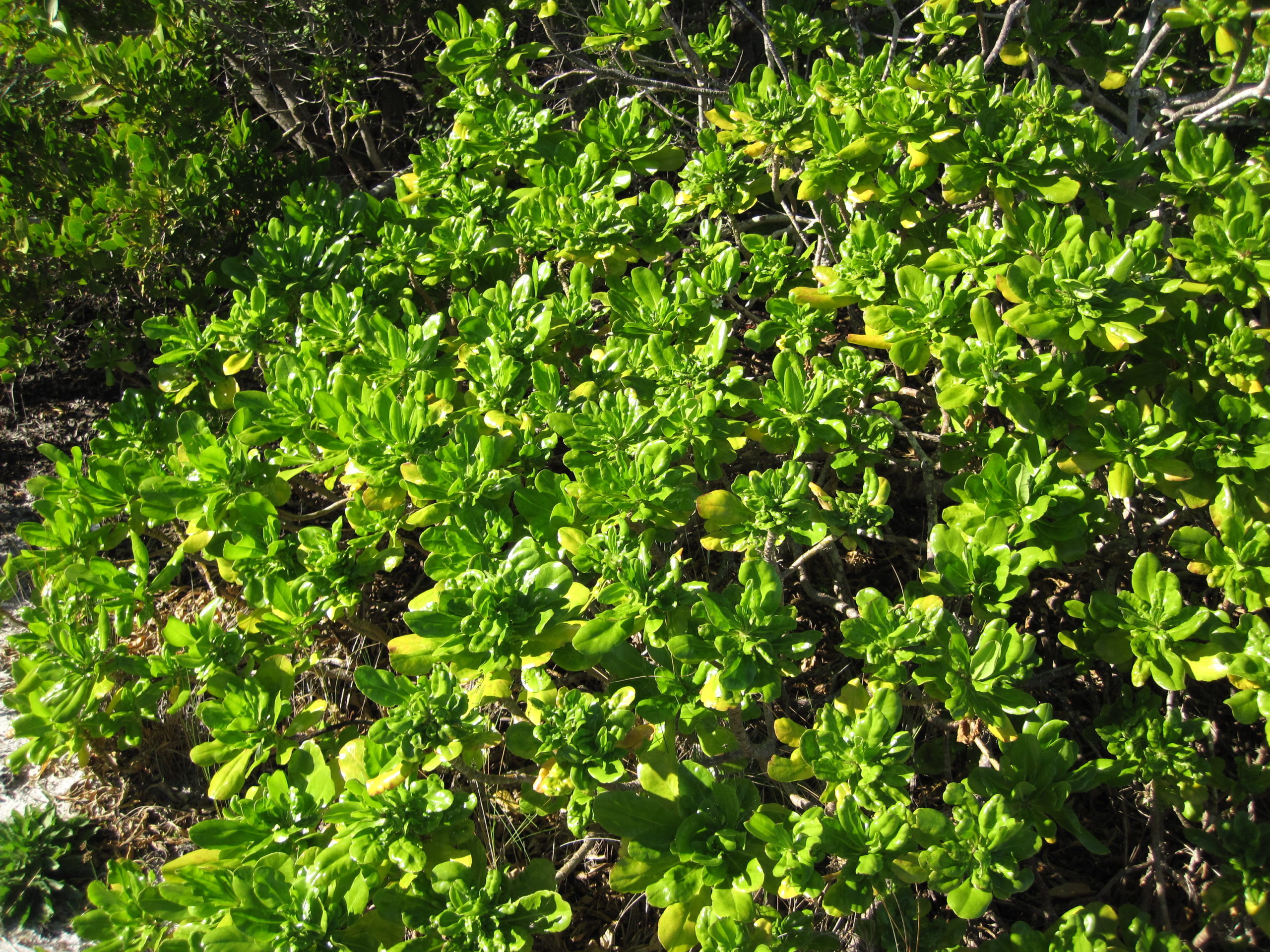
Australian Pine: Casuarina
The Australian Pine is another plant legally prohibited to buy or sell in the state of Florida. Native to Australia, the South Pacific Islands, and Southeast Asia, the Australian Pine can grow up to 150 feet tall. According to the Florida Wildlife Conservation (FWC), the trees were originally introduced into the US to form windbreaks around canals and other structures but has since escaped cultivation. The FWC states the population must be managed because the tree threatens “beach plant communities by quickly invading newly accreted beaches, beaches where dredge spoil has been deposited, and beaches where a storm has destroyed existing vegetation.” The Australian pine produces a dense leaf litter that covers the ground. This decaying matt limits the sunlight’s reach to the native vegetation below. The pines also tend to uproot easily during high winds and topple over to create safety hazards that block coastal storm evacuation routes.
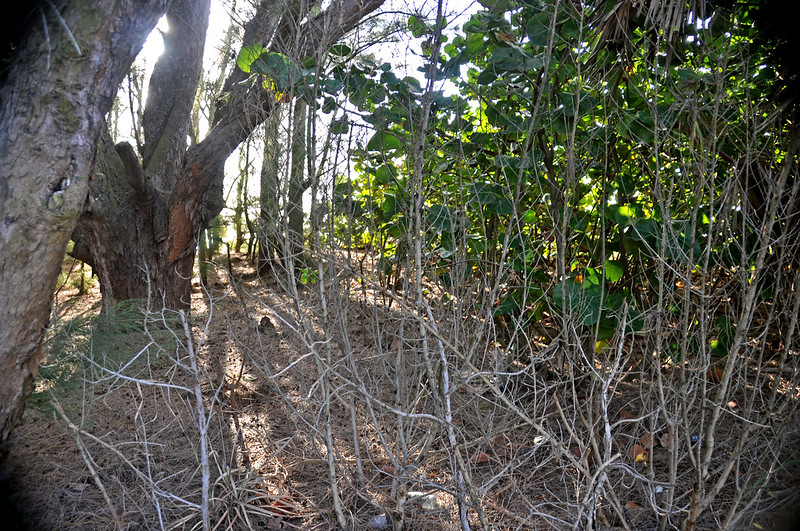
In the image above, you can see the Australian pine’s dense leaf mat.
Chinese Tallow: Sapium Sebiferum
Introduced to the USA during the 1700s, the Chinese tallow was primarily used as an ornamental plant but has since exited domestic cultivation to the wild where it presents an enormous issue for a variety of native habitats. The Chinese tallow can grow along the coast or in swampy waters and can thrive in both shade or direct sunlight. The University of Florida’s Center for Aquatic and Invasive Plants states this highly adaptable plant has invaded the southern coastal plain from South Carolina to South Texas and can be found in over half of the counties in Florida. The plant is legally prohibited in all Gulf Coast states.
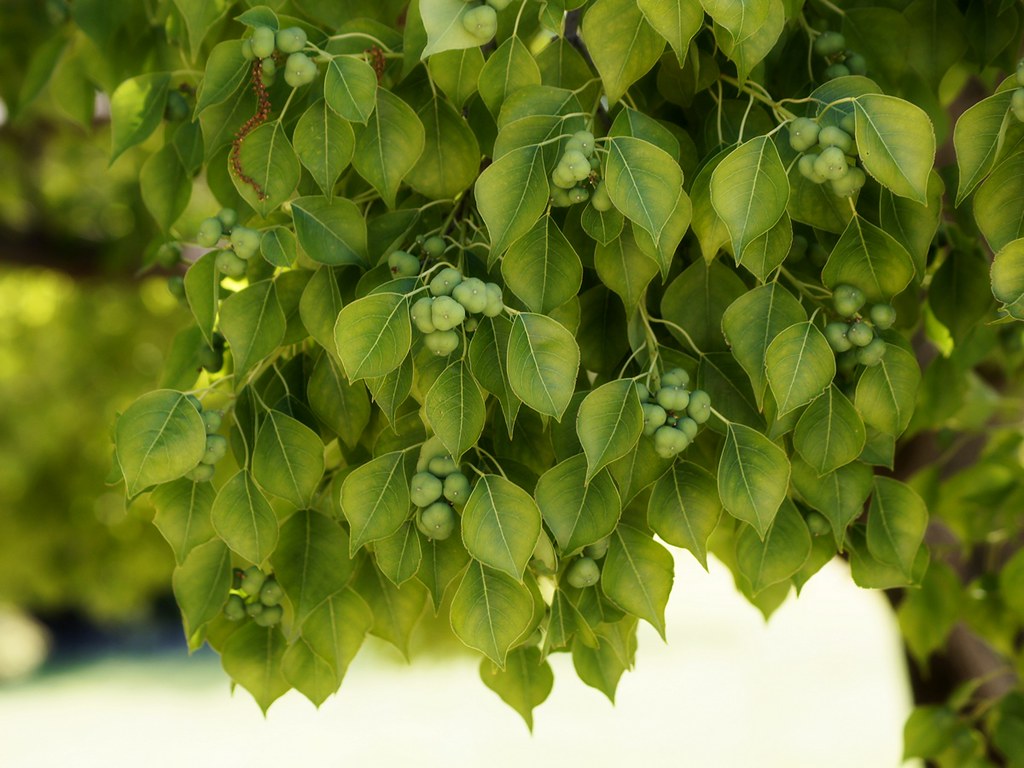
What can you do to protect your dune ecosystem from invasive plants?
A dune ecosystem is a living community of plants and animals that requires routine maintenance and special care to help mother nature protect your property from storm surge and erosion. We have discussed the impacts of four invasive plant species, but not everyone is qualified to remove them. Follow these steps to preemptively minimize invasive species around your property:
- Do not attempt to trim or remove the invasive species, as these plants often can reproduce from seeds or cuttings. Weed whacking will burst ripe seed pods and cast them into the wind causing the invasive species to spread at a higher rate.
- Have our professional team come look at your dunes to diagnose weaknesses in the plant community before invasives can take advantage of your property.
- Analyze your dunes with our Dune Diagnostic Form in hand to spot different environmental threats by matching what you see around your property to the images on the form. Download the form here.
References and Useful Links
University of Florida’s Center for Aquatic and Invasive Plants: Chinese Tallow
Florida Fish and Wildlife Conservation Commission: Australian Pine
University of Florida’s Center for Aquatic and Invasive Plants: Beach Naupaka
University of Florida’s Center for Aquatic and Invasive Plants: Beach Vitex
Florida Exotic Pest Plant Council’s 2019 List of Invasive Plant Species
Invasive Plant Atlas of the United States
National Park Service: Alien Invaders – Exotic Plants in the Everglades
